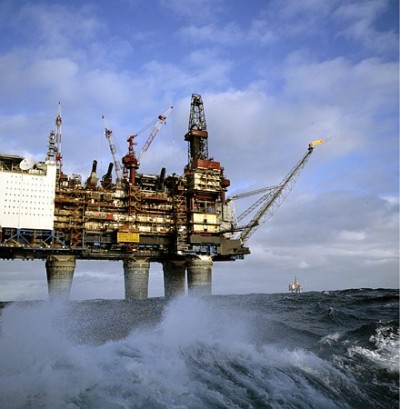Just as news was breaking of another major oil discovery in the seas off Norway, the strongest autumn storm so far was rolling in off the North Sea. The Oseberg, Troll, Gullfaks and Statfjord oil fields were affected, and helicopter traffic to the offshore platforms was halted on Monday afternoon.

State meteorologists warned of nine-meter-high (30-foot) waves and strong winds that would last through the day on Monday. The coastal area around the West Cape (Stad) was expected to be hit the hardest.
Gunnar Livik of the state meteorological institute told Norwegian Broadcasting (NRK) that the storm moved in quickly from Iceland, bringing with it heavy rain that would turn to snow at higher elevations. He warned of difficult driving conditions in the mountains.
Several bridges in Western Norway were already affected and subject to orders for convoy driving or closure. Residents along the coast were advised to fasten any loose items and that boats should remain firmly tied up. Emergency crews were on put on high alert.
“We’re expecting such strong winds and difficult conditions that people just have to be careful,” said Martin Malkenes of Redningsselskapet Sogn og Fjordane. “It’s not worth taking any chances.”
More oil found father north
Meanwhile, farther north on the Njord- and Hyme oil fields in the Norwegian Sea, state oil company Statoil reported new oil discoveries that were estimated to amount to as much as 100 million barrels. It’s the third time in recent months that Statoil has found oil in the vicinity of existing fields.
“We’ve made three new discoveries around Norne, Åsgard and Njord,” Gro C Haatvedt, Statoil’s director of exploration on the Norwegian continental shelf, told news bureau NTB. “This is oil of high value that gives us the possibility to extend the lifetime of our installations.”
newsinenglish.no/Nina Berglund

